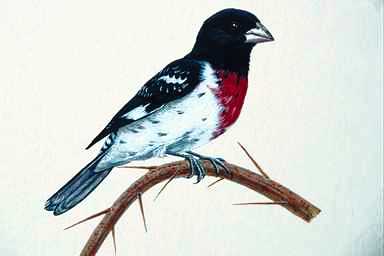|
| Query: bird | Result: 1744th of 32675 | |
Rose-breasted Grosbeak (Pheucticus ludovicianus) <!--붉은가슴밀화부리-->
| Subject: | Rose-breasted Grosbeak (Pheucticus ludovicianus)
| |

| Resolution: 384x256
File Size: 8805 Bytes
Upload Date: 2005:03:10 12:30:44
|
From: "mac"
Newsgroups: alt.binaries.clip-art,alt.binaries.pictures.animals
Subject: Bird "Painting" F-H.
Date: Sat, 5 Dec 1998 22:00:01 +0100
--
H??lsningar
Margaretha
name="Grosbeak.JPG" |
^o^
Animal Pictures Archive for smart phones
^o^
|
|